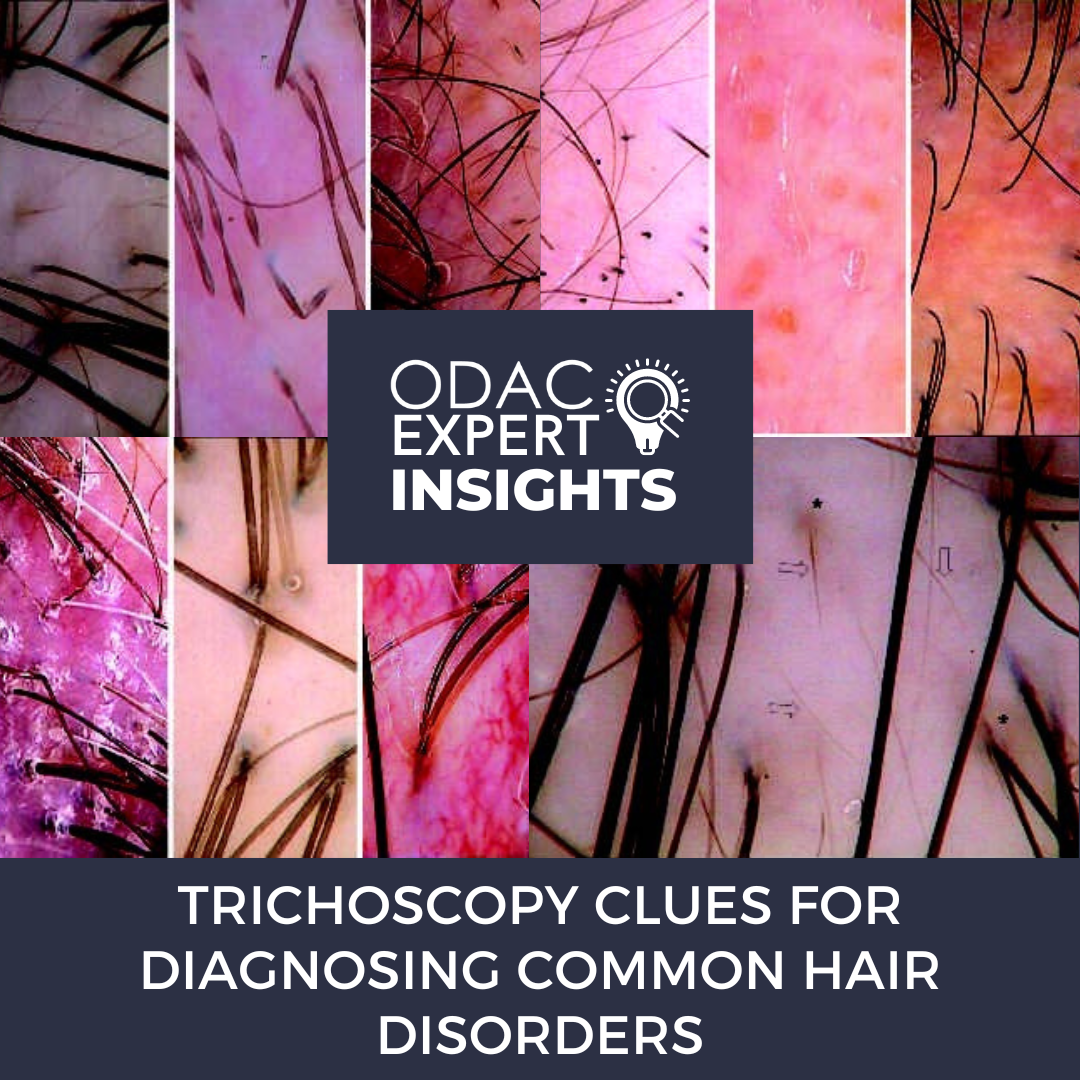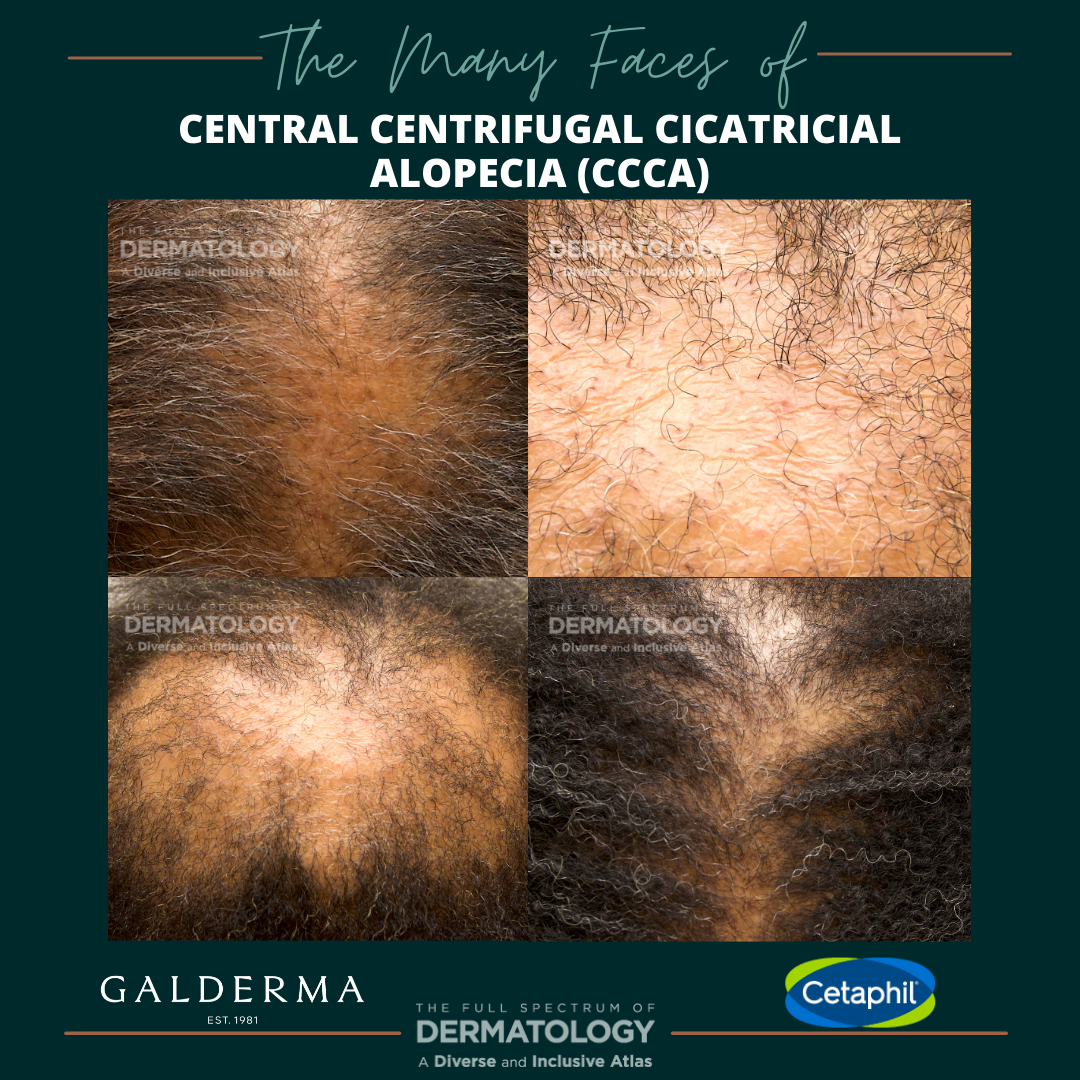Trichoscopy Clues for Diagnosing Common Hair Disorders
 Trichoscopy is a handy dermoscopic tool that can be used at the bedside to diagnose multiple hair diseases. However, these hair diseases may be challenging to diagnose by the untrained eye. Fortunately, we had the opportunity to train these skills at ODAC 2023 with hair expert and dermatologist Dr. Amy McMichael, Professor of Dermatology at Wake Forest University. We will review the essentials of …
Trichoscopy is a handy dermoscopic tool that can be used at the bedside to diagnose multiple hair diseases. However, these hair diseases may be challenging to diagnose by the untrained eye. Fortunately, we had the opportunity to train these skills at ODAC 2023 with hair expert and dermatologist Dr. Amy McMichael, Professor of Dermatology at Wake Forest University. We will review the essentials of …
 Trichoscopy is a handy dermoscopic tool that can be used at the bedside to diagnose multiple hair diseases. However, these hair diseases may be challenging to diagnose by the untrained eye. Fortunately, we had the opportunity to train these skills at ODAC 2023 with hair expert and dermatologist Dr. Amy McMichael, Professor of Dermatology at Wake Forest University. We will review the essentials of …
Trichoscopy is a handy dermoscopic tool that can be used at the bedside to diagnose multiple hair diseases. However, these hair diseases may be challenging to diagnose by the untrained eye. Fortunately, we had the opportunity to train these skills at ODAC 2023 with hair expert and dermatologist Dr. Amy McMichael, Professor of Dermatology at Wake Forest University. We will review the essentials of … Continue reading "Trichoscopy Clues for Diagnosing Common Hair Disorders"


 Alopecia areata is a CD8+ T-lymphocyte driven autoimmune disorder leading to reversible hair loss. While most commonly presenting as isolated well-demarcated non-cicatricial alopecic patches on the scalp, subtypes of alopecia areata include alopecia totalis with loss of all scalp hair and alopecia universalis with complete loss of all body hair. Although primarily an idiopathic condition, several …
Alopecia areata is a CD8+ T-lymphocyte driven autoimmune disorder leading to reversible hair loss. While most commonly presenting as isolated well-demarcated non-cicatricial alopecic patches on the scalp, subtypes of alopecia areata include alopecia totalis with loss of all scalp hair and alopecia universalis with complete loss of all body hair. Although primarily an idiopathic condition, several …  Fresh on the heels of the TikTok trend skin cycling is the latest trend hair cycling. While skin cycling is a regimen that rotates between applying skincare products with active ingredients and products with heavy moisturizers, hair cycling is a regimen that rotates between clarifying and hydrating haircare products. Both regimens are intentional routines that incorporate time to rest the skin or …
Fresh on the heels of the TikTok trend skin cycling is the latest trend hair cycling. While skin cycling is a regimen that rotates between applying skincare products with active ingredients and products with heavy moisturizers, hair cycling is a regimen that rotates between clarifying and hydrating haircare products. Both regimens are intentional routines that incorporate time to rest the skin or …  On this Mnemonic Monday, we challenge you to remember the geographical areas and associated species known for NEW WORLD leishmaniasis transmission with the following mnemonic:
Let's Go Get Brazilian Blowouts in Mexico
Let's = “lutz” aka Lutzomya sandfly species responsible for transmitting new world leishmaniasis
Brazilian = L. braziliensis complex, leishmaniasis species commonly …
On this Mnemonic Monday, we challenge you to remember the geographical areas and associated species known for NEW WORLD leishmaniasis transmission with the following mnemonic:
Let's Go Get Brazilian Blowouts in Mexico
Let's = “lutz” aka Lutzomya sandfly species responsible for transmitting new world leishmaniasis
Brazilian = L. braziliensis complex, leishmaniasis species commonly …  Unique characteristics of Central Centrifugal Cicatricial Alopecia (CCCA) range from hair breakage and thinning to follicular dropout and scarring to pinpoint papules within areas of new onset scarring.
Central centrifugal cicatricial alopecia (CCCA) is a progressive scarring alopecia affecting 3-6% of middle-aged, almost exclusively, Black women. CCCA classically presents as a patch of hai …
Unique characteristics of Central Centrifugal Cicatricial Alopecia (CCCA) range from hair breakage and thinning to follicular dropout and scarring to pinpoint papules within areas of new onset scarring.
Central centrifugal cicatricial alopecia (CCCA) is a progressive scarring alopecia affecting 3-6% of middle-aged, almost exclusively, Black women. CCCA classically presents as a patch of hai …